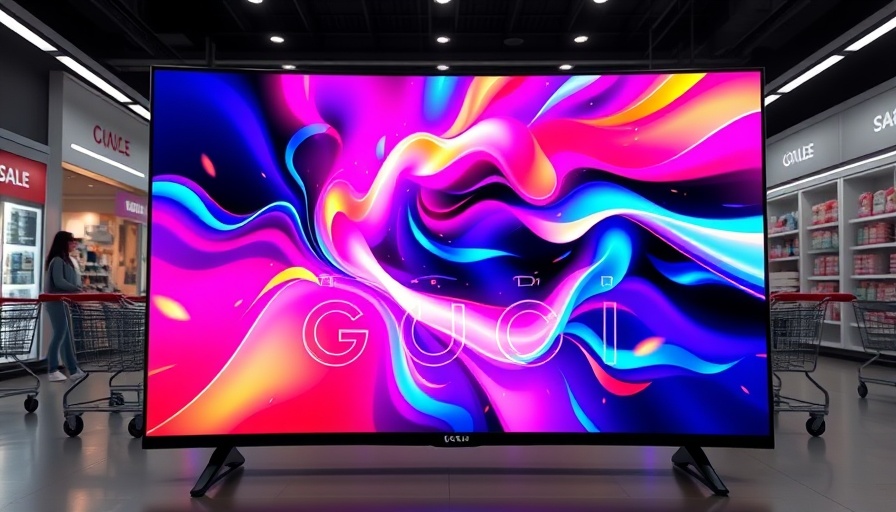Did you know 87% of consumers skip brands with a negative brand reputation ? Your brand reputation isn’t just your business card; it’s your lifeblood in today’s ultra-connected world. A single misstep can cost you customer loyalty, sales, and long-term brand awareness —but most companies don’t realize what’s at stake until it’s too late. In this comprehensive guide, you'll uncover the most common mistakes brands make, real-world examples, and proven tactics to protect and elevate your brand rep before it’s too late. Stick with us and discover how to build a strong brand reputation that stands the test of time.
Brand Reputation: The Cost of Overlooking Mistakes – Why Your Brand Reputation Is Always at Stake
- Did you know that 87% of consumers skip brands with a negative brand reputation? Your brand reputation is your most valuable business asset—and one error can cost you loyalty, sales, and future growth. Let’s explore the essentials of building and safeguarding a strong brand reputation.

| Brand Reputation Mistake | Immediate Business Impact |
|---|---|
| Ignoring negative reviews | Loss of customer trust and loyalty |
| Inconsistent brand identity | Confused messaging, weakened brand image |
| Poor social media crisis management | Viral backlash, rapid decline in public perception |
| Neglecting reputation management systems | Unaddressed issues spiral, reducing sales and growth |
"A brand for a company is like a reputation for a person. You earn reputation by trying to do hard things well." — Jeff Bezos
Understanding Brand Reputation: The Foundation of Long-Term Success
What Is Meant by Brand Reputation?
- Definition of brand reputation and its integral link to consumer trust and market value.
Brand reputation refers to the collective perceptions, opinions, and trust your brand holds in the minds of consumers and stakeholders. It's shaped by every interaction— marketing campaigns , customer service experiences, online reviews , and public relations . A good brand reputation represents a foundation of credibility, trustworthiness, and high perceived value. When you’ve built a strong brand , consumers not only buy your products or services , but they advocate for your business, amplifying your brand awareness in positive ways.
This trust doesn’t happen overnight. Brands that consistently provide quality products , meet customer expectations, and engage authentically—especially on social media —strengthen their brand rep and gain a competitive edge. In competitive industries, brand management is the difference between short-term wins and sustained business grow.

Why Is Brand Reputation So Important?
- Brand reputation shapes perceptions, drives customer loyalty, and impacts every aspect of your brand rep.
Your brand reputation is critical because it directly influences purchasing decisions , brand loyalty , and even investor confidence. A strong brand reputation means customers see your company as trustworthy, responsible, and valuable—qualities that make them choose you over competitors, forgive honest mistakes, and stick around for the long term. On the other hand, a negative brand image drives customers away, no matter how great your products and services might be.
Every public perception , tweet, and review counts. In a world where word spreads fast on social media , all it takes is a poorly managed crisis to jeopardize even the most established brands. That’s why smart companies prioritize their reputation strategy as much as their product innovations. Letting your brand reputation slip can harm your bottom line —and recovery can take years, if you even get a second chance.
"It takes 20 years to build a reputation and five minutes to ruin it. If you think about that, you'll do things differently." — Warren Buffett
Reputation Management: Core Principles for Your Brand
- Overview of reputation management strategies that safeguard your strong brand reputation.
Effective reputation management involves proactive monitoring, consistent messaging, and transparent communication at every customer touchpoint—from customer service to social media . Implementing a structured brand reputation strategy means setting up alerts for negative mentions, responding swiftly to online feedback, and training your team to address crises before they escalate. The goal? Sustain a positive brand reputation even during challenging times.
A smart approach includes periodic brand rep audits, leveraging feedback for improvement, and using public relations to highlight your strengths and values. Invest in reputation management technology and clearly define your brand identity for every marketing campaign , ensuring the message stays consistent across all platforms. Doing so not only shields your business but also cultivates customer loyalty and supports business grow .
The High Cost of Ignoring Your Brand Reputation
The Ripple Effect: How One Mistake Can Damage Your Brand Rep
- Case studies of brands that lost ground due to ignored reputation management.
Major brands have suffered dramatic losses due to a single overlooked brand reputation mistake. Take the example of United Airlines: after a widely publicized customer incident, negative social media coverage and online reviews slashed millions from their market value almost overnight. Similarly, small missteps by well-known food and tech companies have led to viral backlashes, lost customer loyalty , and long-term reputational damage.
These cases highlight how vulnerable even a strong brand can be. Without a solid reputation management protocol, basic errors—from slow crisis response to neglecting online feedback—can spark widespread distrust among your target audience. That distrust not only impacts immediate sales but can disrupt partnerships and stall business grow , showing that reputation is truly a company’s most precious asset.

Loss of Customer Loyalty: From Loyal Customer to Lost Opportunity
- How negative social media and poor public relations drive away your loyal customer base.
A single crisis, left unmanaged, can turn even loyal customers into critics. When negative feedback snowballs on social media , customers feel ignored, unvalued, and misled—damaging the trust companies work so hard to establish. Research shows that after one negative experience, over half of consumers will avoid your business altogether, and a series of negative online reviews can rapidly dissolve your brand image .
The cost of lost customer loyalty extends far beyond short-term revenue: it weakens referrals, shrinks your customer base , and makes recovery much harder. To avoid losing ground, companies must respond promptly and authentically, showing that they value feedback and are committed to resolving customer issues—a key pillar of maintaining a good brand reputation .

Brand Awareness and the Domino Effect
- The cycle: damaged brand reputation, eroded trust, and loss of brand awareness.
The slippery slope of damaged brand reputation often begins with a single error—then rapidly snowballs into broader mistrust. As negative stories or reviews spread, brand awareness suffers, making it harder for your marketing campaigns to gain traction. This erosion of trust not only repels new customers but also prompts existing ones to reevaluate their loyalty, further weakening your public perception .
The domino effect is clear: a poor user experience , inconsistent brand identity , or unaddressed controversy can send ripples through the marketplace, pulling down satisfaction scores, slowing business grow , and even attracting the attention of regulators or media. That’s why a proactive reputation management approach is essential, not optional, for any business that aims for resilience and sustained success.
The Most Common Brand Reputation Mistakes Brands Make
Neglecting Reputation Management Systems
- Failure to adopt proactive reputation strategy and brand reputation strategy platforms.
Too many businesses still depend on outdated methods for monitoring their brand reputation —if they monitor it at all. Ignoring the power of modern reputation management systems means missing opportunities to spot negative chatter or respond to unhappy customers before situations escalate. As a result, brands find themselves blindsided by viral complaint threads or scathing online reviews , damaging their hard-earned public perception .
Adopting the right reputation technology—like review monitoring tools, automated alerts, and unified dashboards—enables you to track mentions, respond quickly, and analyze trends. Proactivity is the key to a positive brand reputation . Brands that invest in such strategies are more likely to correct course before a small issue undermines their entire brand rep .

Inconsistent Brand Identity Across Channels
- Brand identity confusion on social media and digital platforms contributes to a poor brand reputation.
Customers expect a seamless experience when interacting with your brand—online, offline, or via social media . When your brand identity (logos, tone, messaging) shifts dramatically between platforms, it confuses your target audience and dilutes your message. Inconsistent branding sends the signal that your company lacks direction or reliability, quickly creating a negative impression that undermines your brand reputation .
Consistency across marketing campaigns , customer service , and social touchpoints not only builds recognition but also underlines authenticity—a crucial ingredient in fostering customer loyalty . Audit your visual and verbal identity regularly, ensuring that every touchpoint reflects a unified, strong brand image to the market.

Ignoring Customer Feedback and User Experience
- Allowing negative comments to fester on social media lowers user experience and customer loyalty.
Negative or unresolved feedback is among the fastest ways to undermine brand reputation . Brands that ignore user experience problems or let negative comments linger on social media leave customers feeling unheard and unsupported. This quickly erodes trust and can trigger a flurry of negative reviews that stick around online for years.
Proactive listening and engagement—driven by authentic responses and a willingness to improve—transform unhappy customers into loyal customers . The best brands view criticism as an opportunity for growth, using feedback to refine products or services and demonstrate genuine commitment to their community.

Failing to Manage Social Media and Public Relations Effectively
- Unchecked crises and negative publicity quickly erode a strong brand reputation.
Today’s reputation management battles are often won or lost on social media and through strategic public relations efforts. Brands that leave public queries unanswered, respond defensively, or ignore viral issues miss critical opportunities to demonstrate leadership and empathy. This neglect can turn a manageable PR hiccup into a lasting blow to your brand reputation .
Effective reputation management means having a crisis plan, training spokespeople, and monitoring all social media channels for mood shifts. When a company acts transparently and takes responsibility, it shows the market that it values customer loyalty and cares about its brand image . Timeliness, professionalism, and authentic engagement can salvage trust and lay the foundation for a much stronger brand .
"Your brand is what people say about you when you’re not in the room." — Jeff Bezos
Brand Reputation Strategy: How to Protect and Build a Strong Brand Reputation
Building a Positive Brand Reputation from the Ground Up
- Actionable steps to ensure a positive brand and good brand in every consumer touchpoint.
Crafting a positive brand reputation begins with establishing clear values, backing them up with consistent action, and making every interaction count. Start by defining your brand identity —what you stand for, how you want to be perceived, and the kind of user experience you deliver. From there, ensure transparency in all your communications and deliver on promises at every level of your customer service .
Authenticity is your main asset: own up to mistakes, and show a willingness to adapt. Deliver quality products and crowdsource feedback to continually refine your products and services . Finally, empower your team to become brand advocates—when every employee reflects the company’s values, customer loyalty and advocacy rise, resulting in a resilient, good brand reputation .

Leveraging Social Media to Enhance Brand Rep
- Tactics for ensuring a strong brand reputation via responsive, engaging, and transparent social media practices.
Harness the power of social media for reputation management by actively engaging with your audience and responding to concerns in real time. Post content that reflects your brand identity , celebrate customer stories, and share behind-the-scenes moments to create a sense of community.
Transparency and responsiveness matter most during crises or when addressing negative feedback. Don’t shy away from tough discussions—use them as opportunities to show leadership, empathy, and commitment to a positive brand experience. Consistent and authentic interaction can turn critics into promoters and elevate your brand rep.
Consistency in Brand Identity and Messaging
- Why consistent brand identity is vital for reputation management and fostering customer loyalty.
Brand identity uniformity—across websites, ads, social media , and customer touchpoints—reinforces recognition and trust. Mixed signals, disjointed tone, or shifting logos make your brand image harder to remember and trust, which can quickly fuel skepticism among both customers and the public.
Standardize assets, develop clear brand guidelines, and train employees to deliver the same voice and values everywhere. This level of consistency uplifts customer loyalty and solidifies your status as a strong brand —key components of a sustainable reputation strategy .
How to Develop a Long-Term Reputation Strategy
- Elements of a holistic brand reputation strategy that delivers a positive brand experience and supports business grow.
A long-lasting brand reputation strategy integrates ongoing monitoring, public listening, regular audits, and fast, transparent crisis responses. Set measurable KPIs, like NPS or sentiment scores, and review them quarterly to gauge reputation and adjust tactics where needed.
Involve every department in reputation management , from product design to customer service and PR. Encourage innovation that aligns with your values and keep customer-centricity at the heart of every decision. This holistic approach doesn’t just fix problems—it fuels business grow and ensures your brand reputation stands firm in changing times.
The Role of Customer Loyalty and User Experience in Sustaining Brand Reputation
From First Impression to Loyal Customer: Steps for Building Trust
- Ongoing engagement, authenticity, and user experience as drivers of brand awareness.
Securing a loyal customer starts at the very first interaction. Make that impression count with an intuitive user experience , friendly service, and transparent communication. Keep customers engaged through personalized follow-ups, rewards programs, and swift problem resolution. Regularly seek feedback and demonstrate responsiveness not only to compliments but, especially, to concerns.
Trust is built through consistency, authentic interaction, and a relentless focus on delivering value. These pillars don’t just promote brand awareness , but convert one-time visitors into brand ambassadors who advocate for your products or services .

The Power of Reviews: Reputation Management in the Digital Age
- How monitoring and responding to reviews fortifies your brand reputation online.
Online reviews have become pivotal in shaping public perception of your brand. Proactively monitoring, responding to, and learning from reviews on platforms like Google, Yelp, and Trustpilot is a crucial aspect of reputation management . Ignoring even a single negative review can amplify its impact and signal indifference to your community.
By thanking reviewers, addressing complaints, and making visible improvements, brands show they care about the user experience and listen to their customers’ voice. This kind of transparent communication builds resilience into your brand reputation , transforming critics into advocates and growing a loyal following.

- Watch how three top brands reversed damaging trends and turned negative perceptions into strong brand reputation wins.
In this video, see how household names like Domino’s, LEGO, and Netflix addressed serious brand reputation crises. Through transparent communication, innovative marketing campaigns , and a relentless focus on user experience , they not only repaired reputational damage but also emerged as trendsetters within their industries. Their stories are proof that, with the right reputation strategy , recovery and even transformation are possible, putting your business on a path to renewed customer loyalty and growth.
- Step-by-step tutorial on conducting a brand reputation audit and setting up alerts for critical issues.
Discover practical steps to protect your brand rep : from scanning social media channels and review platforms to using sentiment analysis tools and feedback dashboards. This hands-on guide shows how to establish real-time alerts, map reputation trends, and act fast when negative patterns emerge—safeguarding your brand reputation and ensuring you remain one step ahead in managing risk.
What You'll Gain: Key Takeaways to Avoid Brand Reputation Mistakes
- Recognize the signals of a failing brand reputation early
- Understand why brand identity and communication matter
- Implement best-in-class reputation management strategies
- See the critical role of social media and public relations
- Create a loyal customer community for a good brand reputation
People Also Ask
What is meant by brand reputation?
- Brand reputation is the perception stakeholders and consumers have about your brand based on direct experiences, marketing efforts, reviews, social media presence, and public relations activities. A strong brand reputation equates to trust, credibility, and higher value.
Why is brand reputation so important?
- Brand reputation influences purchasing decisions, brand loyalty, investor confidence, and media coverage. A solid brand rep provides resilience during crises and makes it easier to grow in competitive industries.
What is an example of a good reputation?
- A good brand reputation is exemplified by brands like Apple and Patagonia, who consistently meet customer expectations, deliver on promises, and communicate transparently, leading to positive brand sentiment and loyal customers.
How do you build brand reputation?
- Build your brand reputation by continuously delivering value, engaging authentically on social media, maintaining a strong brand identity, cultivating customer loyalty, and applying rigorous reputation management practices.
Frequently Asked Questions about Brand Reputation
- How do I track my brand reputation online?
- What should I do if my brand reputation suffers a crisis?
- How important is employee advocacy for brand rep?
- Can small businesses compete with larger brands on reputation?
- What tools are best for reputation management?
Maximize Your Brand Reputation – Next Steps
- To secure, strengthen, and grow your brand reputation, evaluate your reputation management strategies today. Don’t leave your brand rep to chance: every action you take matters. Stay proactive, consistent, and customer-focused for a strong brand reputation that fosters growth and lasting success.
Conclusion
Take decisive steps today: conduct a reputation audit, unify your brand identity, engage your customer community, and stay vigilant on social media. The future of your business depends on your brand reputation.
Sources
- Forbes – https://www.forbes.com/sites/theyec/2023/10/30/how-brand-reputation-influences-consumer-behavior/
- Harvard Business Review – https://hbr.org/2019/03/the-truth-about-customer-experience
- Inc. – https://www.inc.com/adam-heitzman/why-your-companys-online-reputation-matters-more-than-ever.html
- Social Media Today – https://www.socialmediatoday.com/news/the-importance-of-brand-reputation-on-social-media/601859/
To further enhance your understanding of brand reputation and its critical role in business success, consider exploring the following resources:
- “Building Brand Reputation: Elevate Your Image” ( mailchimp.com )
This article delves into the importance of brand reputation, offering insights into how a positive perception can instill trust, attract new customers, and build loyalty.
- “Brand Reputation: Build a Reputation That Drives Customer Loyalty” ( coschedule.com )
This resource provides strategies for building and maintaining a resilient brand reputation, emphasizing the impact on customer loyalty and long-term success.
By exploring these resources, you’ll gain valuable insights into the significance of brand reputation and practical steps to enhance and protect it.
 Add Row
Add Row  Add
Add 










Write A Comment